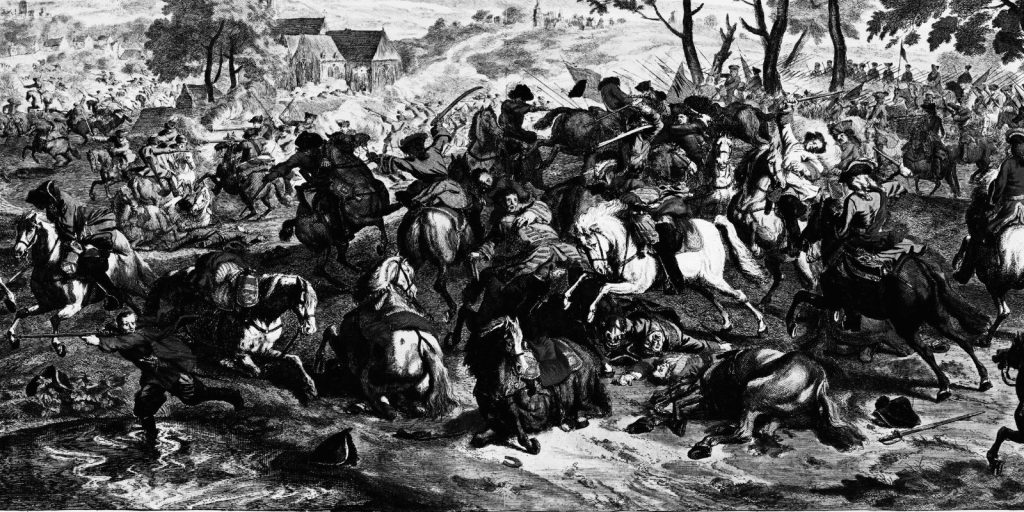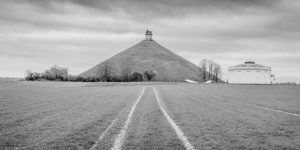
What Happened On June 18th?
June 18th of 1815 was the day that Napoleon Bonaparte met his defeat on the battlefield of Waterloo. This battle ended the emperor’s rapid rise and reshaped Europe’s political landscape, starting a new era of diplomacy and power.
Waterloo was just a small village in present-day Belgium. Napoleon, once commanding nearly all of Europe with his strategic genius, now faced adversity. A coalition of British, Prussian, Dutch, and Belgian troops were led by the Duke of Wellington and Field Marshal Blücher to end his reign.
The battlefield, a mix of rolling hills and valleys, affected the outcome. The rain-soaked terrain turned into a quagmire, hindering troop movements and artillery. This mud bogged down Napoleon’s troops and cannons, thwarting his strategies.
Napoleon’s 72,000-strong army was outnumbered by Wellington’s 68,000 troops and Blücher’s 45,000 Prussians. Despite these odds, Napoleon remained confident in his ability to outmaneuver his adversaries.
The Emperor’s Elite Forces
The Imperial Guard was fiercely loyal to Napoleon. This elite unit stayed in reserve, a strategic move by Napoleon who hoped to use them decisively. However, relentless pressure from Wellington’s troops and the Prussians disrupted his plans.
The battle began with a French assault on the allied left flank, targeting the farmhouse of Hougoumont. This seemingly minor outpost became a focal point of intense fighting. The British, aided by their allies, held firm, tying down French forces and preventing them from reinforcing other key areas.
Around midday, Napoleon launched a massive infantry assault on the allied center with D’Erlon’s corps. Initially successful, the attack was repelled by a counter-charge from the British heavy cavalry, including the Scots Greys, creating chaos and forcing a retreat.

In the late afternoon, the Prussian forces began arriving, placing immense pressure on the French right flank. Despite exhaustion, Blücher’s men entered the fray with vigor. The coordination between Wellington and Blücher proved decisive in the allied victory.
Psychological Tactics & Final Charges
Both sides used psychological tactics. Allies spread rumors of reinforcements to demoralize the French. Napoleon’s presence on the battlefield aimed to boost his troops’ morale. This interplay of morale and leadership influenced the battle’s outcome as much as tactics.
As evening fell, Napoleon ordered the Imperial Guard to charge the allied center in a final desperate bid. These veterans advanced with determination but met devastating musket fire and a relentless counter-attack. The sight of the Imperial Guard retreating spread panic among the French, leading to a full-scale rout.
Exile Of An Emperor
After Waterloo, the battlefield became a harrowing sight with around 25,000 French casualties and 22,000 allied casualties. Following his defeat, Napoleon surrendered to the British and was sent into exile on the remote island of Saint Helena. Far from the political intrigues of Europe, he spent his remaining years under constant British supervision, isolated and brooding over his past glories and the empire he once ruled.
Notable Moments
The fight at Hougoumont saw some of the day’s fiercest combat. The French attacked it repeatedly, hoping to draw Wellington’s reserves. However, the defenders, including British Guards and Nassau troops, held out against overwhelming odds. This defense tied down a great number of French troops that could have been used elsewhere.
Artillery played a key part in the battle. Napoleon had always been a master of artillery tactics. However, at Waterloo, the wet ground prevented his cannons from being as effective as usual. The mud made it difficult to move the guns, and cannonballs did not bounce and cause as much damage as they would have on firmer ground. This significantly reduced the impact of one of Napoleon’s key advantages.
Napoleon’s health issues affected his command during the battle. Suffering from severe hemorrhoids, he struggled to ride his horse, making it difficult for him to oversee and direct his troops effectively. Additionally, some reports suggest he was suffering from a cold, which may have further impaired his decision-making.
Local Belgian women tended to the wounded after the battle. The battlefield, covered with the dead and dying, required immediate attention. These women, often with little medical training, provided water, bandaged wounds, and comforted the soldiers from both sides.

Napoleon’s Personality & Leadership
Napoleon’s leadership style was characterized by his presence on the battlefield. He was known to lead from the front, inspiring his troops by sharing in their dangers. At Waterloo, he rode along the lines, personally directing assaults. His charisma and personal bravery had always been a part of his leadership, but at Waterloo, this was not enough to turn the tide.
Napoleon was also known for his use of deception and speed. He often moved his armies quickly and unpredictably, catching his enemies off guard. At Waterloo, he tried to use these tactics but was hampered by the weather, terrain, and the resilience of the allied forces.
Napoleon’s Final Years On Saint Helena
On Saint Helena, Napoleon lived in relative isolation. The British, wary of any escape attempts, kept him under strict surveillance. Napoleon’s health deteriorated in the harsh conditions of the island, and he spent much of his time dictating his memoirs, attempting to shape his legacy for future generations. He died on May 5, 1821, at the age of 51. His death ended an era, but his influence on European history endured.

